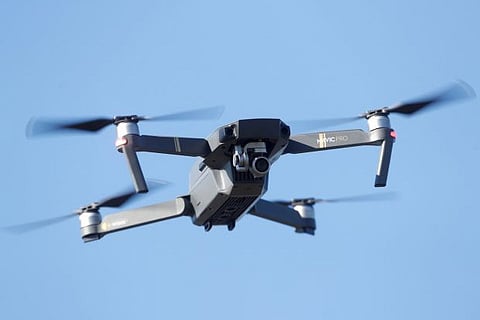

New Delhi
We know, for instance, that the Islamic State used it in Iraq. But there are reasons to be extremely apprehensive about this technology being further developed and employed; there is a real risk that drones could become the favoured choice of terror groups in the not-too-distant future. There are many reasons for this. Drones are much cheaper than aircraft, missiles, and more complicated forms of aerial unmanned vehicles. They can be deployed easily, are difficult to spot, not easy to take down, and can be used to hit multiple targets at once, thereby heightening panic, an important terror objective. Finally, they dispense with the reliance on enrolling and training those sent on dangerous missions, leave alone suicide bombers.
During US former President Barack Obama’s second term, his administration used drones indiscriminately in the middle-east, causing much devastation and killing thousands in countries such as Libya, Yemen, Somalia, Iran and Pakistan. The reasons for using them were very similar to that of terrorists – drones are cheap and they do not risk lives (in the US’s case, they avoid controversies about body bags). Given that drones have been adopted by non-state actors, it was perhaps only a matter of time before India suffered one attack. The country had its first taste of such an assault when twin explosions were triggered by drones dropping their payloads at the Air Force base in Jammu airport. While the damage was negligible, the incident highlights the risks that drones could pose in the future.
India has blamed the Pakistan-based Jaish-e-Mohammed for the attack, which it says was launched across the border. While further investigations could reveal the full picture, it would be short-sighted to dismiss this as a low-grade one-off attack, or just a feeble attempt at signalling displeasure with the Centre’s recent attempt to sit down with Kashmiri leaders and discuss the delimitation exercise, a precursor to elections in Jammu and Kashmir. Rather, this should be regarded as a catalyst to speed up the measures for putting in place the necessary surveillance and other equipment required to neutralise the threat from unmanned aerial vehicles.
It is imperative that India quickly acquires and installs anti-drone systems that can detect drones a couple of kilometres away and shoot them down with laser weaponry. While a large country like India may not be able to create the kind of Iron Dome that Israel has against incoming aerial threats, there is a case for setting up anti-drone countermeasures in sensitive locations near the India-Pakistan border as well as in civilian clusters. This will cost considerable sums of money, but there is no alternative when it comes to drones than go fight technology with technology. And this invariably comes at a cost.
Visit news.dtnext.in to explore our interactive epaper!
Download the DT Next app for more exciting features!
Click here for iOS
Click here for Android